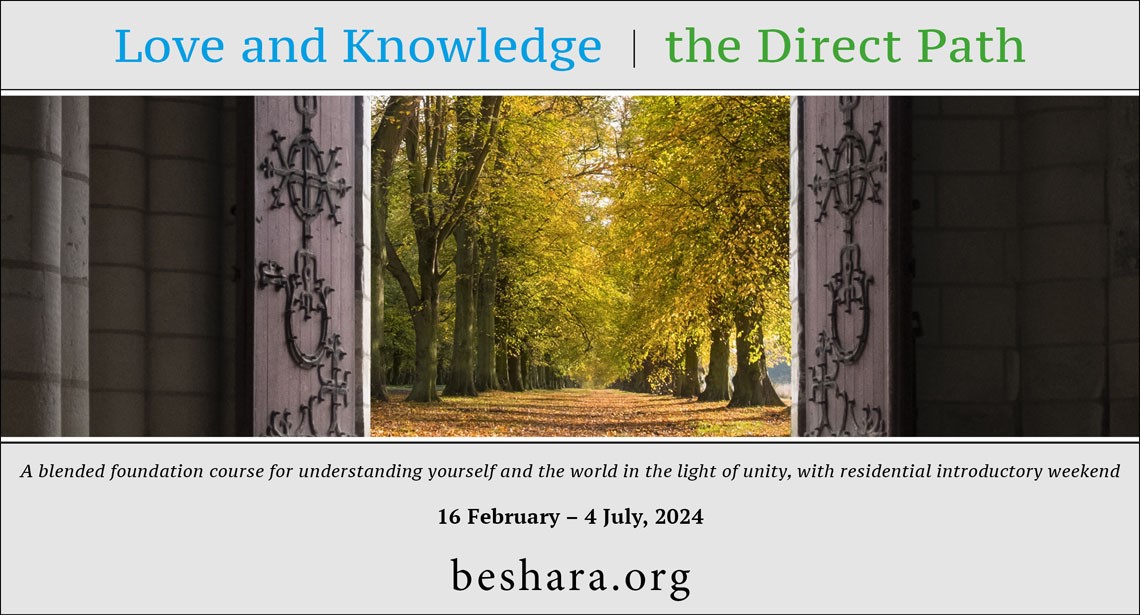by Jim Blackmann
A man travelled to a poor country, where he saw a young boy drawing a bucket from a well. The boy carried the bucket across the dry farmland and, as he did, water leaked from the bottom. The man took pity on the boy and went into town and bought him a new bucket. He returned to the farm and gave the bucket to the boy, and the boy smiled in gratitude. Next day the man returned to the farm and he saw the young boy drawing water from the well again. The boy walked across the dry farmland, and as he did, the new bucket leaked just like the old one. 'What have you done to the new bucket?' demanded the man, 'It's full of holes'. 'How else am I going to irrigate the land?' asked the boy.
We think we see the world as it is. We think we see people, events and nature exactly as they are. But what we see is accompanied by what we think, and what we think can affect what we see just as certainly as bad eyes or a glowing sunset.
The art of seeing the world as it is, is known in the East as 'tathata', or 'suchness', and it means 'to see the true state of things'. Suchness plays an important part in Zen; indeed, it could be said that the aim of Zen is to get the student to see things as they really are. D. T. Suzuki (1870 - 1966), who was largely responsible for introducing Zen to the West, defined suchness in this way in his Essays in Zen Buddhism (1927):
'A mind really sincere and thoroughly purified is the necessary preliminary to the understanding of reality in its suchness'.
We can misread a look, a remark or a situation, and we can do so without even realising it. A relationship can break down because one party misreads the other's intention. We can mistake flattery for a compliment, and take offence at an innocent remark. Some matters can be put down to life lessons, but for other matters, such as romance scams or mis-selling, we can be stung badly.
We do not see the bias in our own thinking because it is like our own accent; we are too familiar with it to hear it clearly. That is why a well-spoken accent will sound out of place in common company, and a common accent will sound out of place in well-spoken company. Internal bias is the reason why a carpenter, a farmer, and an artist will all look at the same tree and see it differently. It is why a dark road will seem foreboding to someone who is lost and a welcome sight to someone heading home. What we see depends on what we think.
William James (1842 - 1910), who wrote the Principles of Psychology, had the following to say about the way mind interprets reality:
'The so-called 'fallacy of the senses', of which the ancient sceptics made so much account, is not fallacy of the senses proper, but rather of the intellect, which interprets wrongly what the senses give’.
Everything we see is accompanied by what we think, and if we think in a limited way, we will see in a limited way. If we are looking for beauty, we will find beauty, and if we are looking to find fault, we will see nothing but faults.
To see the world as it is, we have to observe without adding our own personal opinion to what we see, and this is the 'suchness' of Zen. To practice 'suchness', we have to silence the mind, at least for the time we are observing. This is not as easy as it seems, but if we can observe for a while without allowing our thought processes to interfere, we will see far more than our ordinary opinions will allow.
The practice of silent observation is more than simply an exercise in seeing the world rightly; it is about being able to make good judgements. Bad judgements are often based on seeing too little and then jumping to conclusions. If we want to know whether to trust someone or not, or to change jobs or not, or to move home or not, then we have to hold off our automatic judgements and opinions and listen to our gut-feeling. Our gut feeling speaks to us, not in a clear voice or in precise terms, but almost in a whisper. To hear it, we have to silence the ordinary mind.
To see intuitively, we have to stop our ongoing stream of thoughts and simply observe with attention. If we can do this, we may find that the ordinary and everyday becomes much more fascinating than we previously imagined. The American philosopher Ralph Waldo Emerson once said that if the stars only appeared one night in a thousand years we would be awestruck by them. Suzuki, in explaining Zen to a Western audience, pointed to William Blake's poem Auguries of Innocence (1803) as an example of the rich seeing the practice of suchness:
To see a World in a Grain of Sand
And a Heaven in a Wild Flower
Hold Infinity in the palm of your hand
And Eternity in an hour
We don't have to retire to a Zen monastery to practice suchness. We have the opportunity to do this in everyday life. We can observe a flower in a garden, listen carefully to a friend, take in the mood in a park, or enjoy the silence of the night. Each time we do this, we train the mind in the art of suchness. The practise can be rewarding.
 About the author:
About the author:
Jim Blackmann is a writer and musician. He grew up in Canada, and travelled widely, before finally settling in the south of England. He began writing a series of magazine articles about intuition in 2012. This led to the books
The Intuition Test – from gut-feeling to insight (2016),
Intuition in the West – a history of intuitive thinking, and a novel,
The Witch & The Skeptic – a tale of science, magic and tea (2021). All available through
www.jimblackmann.com

 About the author:
Jim Blackmann is a writer and musician. He grew up in Canada, and travelled widely, before finally settling in the south of England. He began writing a series of magazine articles about intuition in 2012. This led to the books The Intuition Test – from gut-feeling to insight (2016), Intuition in the West – a history of intuitive thinking, and a novel, The Witch & The Skeptic – a tale of science, magic and tea (2021). All available through
About the author:
Jim Blackmann is a writer and musician. He grew up in Canada, and travelled widely, before finally settling in the south of England. He began writing a series of magazine articles about intuition in 2012. This led to the books The Intuition Test – from gut-feeling to insight (2016), Intuition in the West – a history of intuitive thinking, and a novel, The Witch & The Skeptic – a tale of science, magic and tea (2021). All available through 















